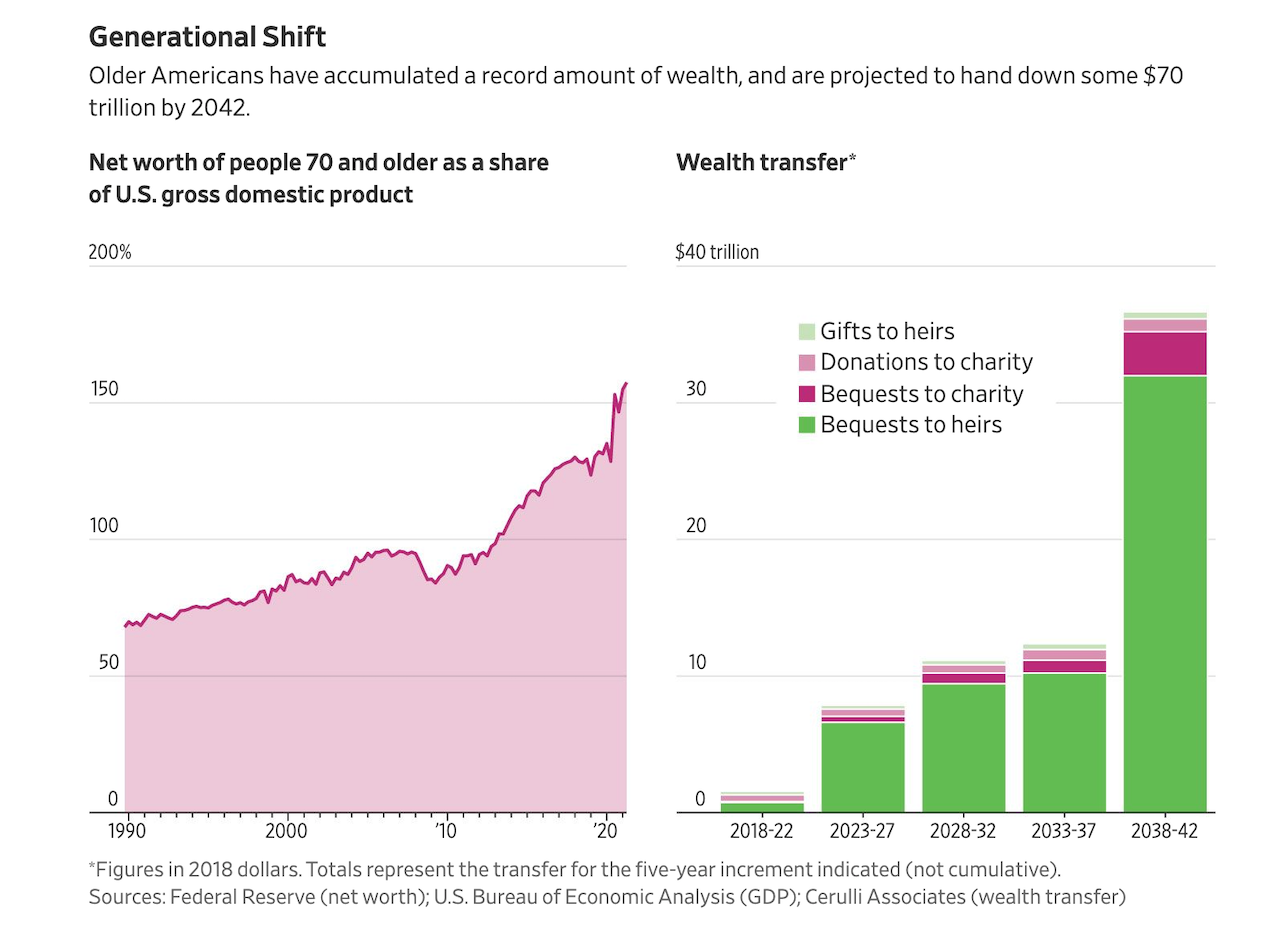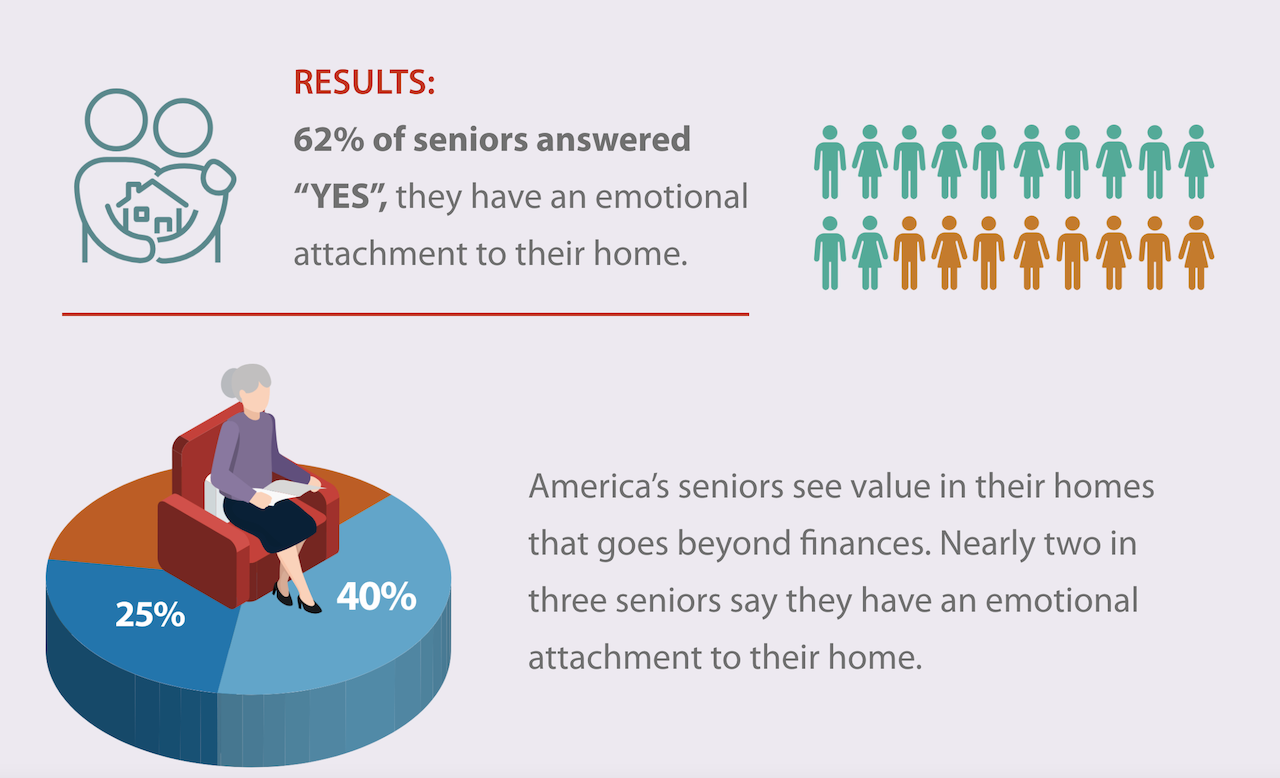Architecture
How Builders Could Miss Where The Money Is Through 2030
Here's evidence that current investments in homes and communities that integrate livable design, universal design, and home health technology may fall short of the enormous opportunity.

Underinvesting in a $35 trillion market – 27% of all U.S. wealth – would not make sense, now, would it?

So, are residential real estate investors, developers, builders, architects, and all of their business partners underappreciating opportunity in a current, future, and lasting unmet need?
Does that make sense, especially when building technology, home technology, materials science, the health sciences, machine learning, and community planning have so evolved as to offer a tipping point improvement at what could hardly be a better moment from a business standpoint?
On the early surge of "the silver tsunami?"
The connector here – home to health – is above debate.
Challenge and opportunity, of course, come in exploring whether this relationship goes beyond correlation to cause-and-effect.
At the kitchen table level, people express little doubt, almost no uncertainty. We asked the question in research a few years ago and the answer was unambiguous. People feel, and believe, and think that homes play an active role, not only in their health in a general sense, but in saving money on medical bills!
Home – our minds tell us – affects our health. Literature and evidence galore support this:

First, there are papers describing the health impacts of not having a stable home (the stability pathway). Second, there are papers describing the health impacts of conditions inside the home (the safety and quality pathway). A third, smaller set of papers describes the health impacts of the financial burdens resulting from high-cost housing (the affordability pathway). Lastly, a rapidly growing literature describes the health impacts of neighborhoods, including both the environmental and social characteristics of where people live (the neighborhood pathway).
This goes for all of us, at any age.
It's no surprise, then, that for those of us "of an age" home is a literal lifeline, a cause-and-effect force in what we need, want, aspire to, and believe in as a source of well-being, peace of mind, physiological soundness, and a rooted sense of comfort and flourishing.
A new study, spotlighted by Housingwire's Chris Clow, notes here that more than four out of five "seniors" want to stay put in their homes. Motivations for that preference often run far deeper than financial reasons. Clow writes:

Part of what drives the overwhelming desire for seniors to remain in their homes is the idea of safety. 83% of surveyed seniors answered that they generally feel safer when in their own homes, compared to living situations that do not involve their houses. Feeding into that idea of safety directly is the impact of the COVID-19 coronavirus pandemic, as 50% of respondent seniors said that the pandemic has contributed to their desire to remain at home.
The survey also asked about their feelings about home in a reflective sense, with 74% of seniors indicating that buying a home was “the best financial decision they have ever made,” according to the results. 62% of respondents also responded affirmatively when asked if they maintain an emotional connection to their homes.
Here, a bit randomly, are parts of this enormous housing business story that will span the 2020s and beyond.
- From Zillow: Americans 60 years and older are more active in the housing market than a decade ago. The punchline: They're competing with Millennials for homes.
- From The Atlantic: Living alone in the U.S. is harder than it should be. The punchline: Single-person households are mostly considered "odd-ducks" in real estate.
- From The Census: Living with disabilities. The punchline: The operative part of the phrase now is "living with," rather than "disabilities." See Jeffrey Demure's "Livable Design."

- From the NAHB: The 55+ Housing Market Index, monitoring and measuring conditions among developers and builders of 55+ housing projects and communities. The punchline: Currently suspended.
- From The Center for Social and Demographic Research on Aging: A heat-map Elder Index. The punchline: Living expenses are high in metropolitan areas across the U.S.
Again, does underinvesting in this market of people who command more than one of every four dollars of wealth and who want the well-being, the peace-of-mind, the safety, the lifeline of home make sense?
If Millennials who are trying to form families have to compete with Baby Boom generation adults who are trying to find homes to enjoy and flourish in that later chapter, maybe the answer is "yes."
The market opportunity is underappreciated, underinvested.
Join the conversation
MORE IN Architecture
Integration Has Pivoted Into Homebuilding’s Survival Skill
Higharc’s "linked options" are pre-defined combinations of home features that account for all dependencies between design, materials, and pricing. Once defined, they automatically populate across all systems, reducing error and time-to-quote.
Florida Condo Project Sets Resilience Benchmark Early
Contributing writer Richard Lawson explores the challenges – and an urgent lane of future-proof opportunity for residential developers – in an exclusive interview with John Farina, president of U.S. Development.
Wellness Is the New 'Why' In Neighborhood Development
Health and well-being are no longer add-ons—they’re the foundation of value, purpose, and performance in new communities. From brain-friendly design to AI-native living, five big trends are redefining what home means now.
